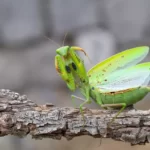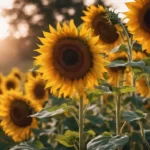Eucalyptus, known for its distinct fragrance and attractive foliage, is a plant that holds both aesthetic and herbal significance. Growing eucalyptus from seed can be a rewarding experience for gardeners, offering the opportunity to cultivate this versatile plant right from the start. This guide will walk you through the process, from selecting the right seeds to the early stages of plant care.
Eucalyptus
Eucalyptus is a diverse genus, with species ranging from small shrubs to large trees. Originally native to Australia, these plants are now grown worldwide for their ornamental value and their use in essential oils and medicinal remedies. When planning to grow eucalyptus, it’s crucial to choose a species that is suitable for your climate and gardening space. Some species are more cold-hardy, while others thrive in warmer environments.
Preparing to Plant Eucalyptus Seeds
Before sowing your eucalyptus seeds, a few preparatory steps are necessary:
- Seed Selection: Choose a eucalyptus variety that suits your climate and intended use. Consider factors like growth rate, mature size, and hardiness.
- Seed Stratification: Some eucalyptus seeds may require stratification – a process of cold treatment to break dormancy. Check the specific requirements of your chosen species.
- Gathering Supplies: You’ll need small pots or a seed tray, high-quality seed starting mix, and a spray bottle for watering. Ensure your pots have adequate drainage.
Sowing Eucalyptus Seeds
Eucalyptus seeds are typically small and should be sown with care:
- Soil Preparation: Fill your pots or seed tray with a well-draining seed starting mix. Moisten the soil slightly before planting.
- Sowing the Seeds: Sprinkle the seeds lightly over the soil surface. Cover them with a thin layer of soil, as eucalyptus seeds need some light to germinate.
- Seed Spacing: If using a seed tray, space the seeds out to prevent overcrowding, which can lead to fungal issues and poor growth.
Caring for Eucalyptus Seedlings
Once your eucalyptus seeds have been sown, proper care is essential for the growth of healthy seedlings:
- Watering Requirements: Eucalyptus seedlings need to be kept consistently moist but not waterlogged. Use a spray bottle to gently mist the soil whenever it begins to dry out. Over-watering can lead to root rot, so ensure good drainage.
- Light and Temperature Conditions: Eucalyptus seedlings require plenty of light. Place them in a sunny window or under grow lights. They typically prefer warmer temperatures, so maintaining a room temperature between 60-75°F (15-24°C) is ideal.
- Fertilization: Once the seedlings have a few sets of true leaves, you can start applying a diluted, balanced liquid fertilizer every few weeks to promote healthy growth.
Transplanting Eucalyptus Seedlings
Transplanting eucalyptus seedlings into your garden or larger pots is the next step:
- Timing: Transplant seedlings when they are large enough to handle and after the risk of frost has passed. They should be at least a few inches tall with strong root growth.
- Choosing the Right Location: Eucalyptus plants prefer a spot with full sun and well-drained soil. They need plenty of space to grow, so consider the mature size of your species when selecting a location.
- Transplanting Process:
- Gently remove the seedlings from their starter pots, taking care not to damage the roots.
- Dig a hole in your prepared spot that is slightly larger than the root ball of the seedling.
- Place the seedling in the hole and fill in with soil, gently firming it down.
- Water thoroughly after planting to settle the soil around the roots.
After transplanting, continue to monitor your eucalyptus plants, ensuring they receive adequate water as they establish themselves in their new location.
Ongoing Care and Maintenance
After successfully transplanting eucalyptus seedlings, ongoing care is crucial for the development of robust and healthy plants:
- Pruning and Shaping: As eucalyptus plants grow, they may require pruning to maintain the desired shape and size, especially if grown as a shrub or in a small garden space. Regular pruning can also encourage bushier growth and prevent the plants from becoming leggy.
- Monitoring for Pests and Diseases: Eucalyptus plants are generally hardy but can be susceptible to pests like aphids and diseases such as root rot. Regularly inspect your plants and treat any issues promptly with appropriate organic or chemical controls.
- Winter Care: In colder climates, some eucalyptus species may need protection during winter. Mulching around the base can help protect the roots from freezing temperatures. If grown in pots, consider moving the plants indoors or to a sheltered area during extreme cold.
Conclusion
Growing eucalyptus from seed can be a gratifying experience, adding both beauty and a unique fragrance to your garden. By following the steps outlined – from seed selection and sowing to transplanting and ongoing care – you can successfully cultivate these fascinating plants.
Remember, patience and attention to detail are key in nurturing eucalyptus from seed to maturity. With consistent care, your eucalyptus plants will thrive, offering lush foliage and an enchanting presence in your garden.
Whether you’re a seasoned gardener or a beginner, growing eucalyptus offers a rewarding challenge with a beautiful payoff. So, embark on this gardening adventure and enjoy the myriad benefits that these magnificent plants bring.



